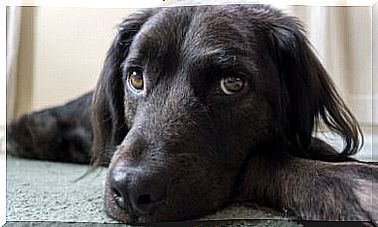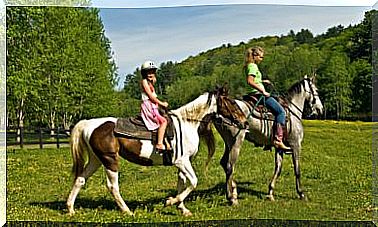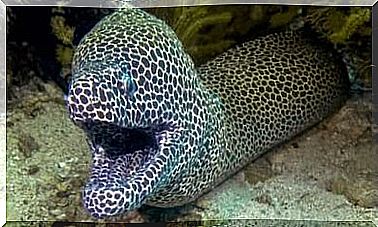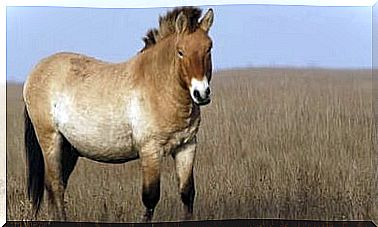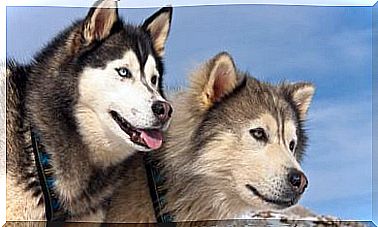How To Give First Aid To A Dog

The first aid for dogs provides a set of simple techniques that are used to help your animal in distress.
For example, in the event of an accident or injury. If you have a puppy, there is nothing more distressing than seeing that he has a problem and not knowing how to help him, in a timely and effective way. For this reason, we have decided to show you the cardiopulmonary resuscitation protocol and the other maneuvers to provide first aid to a dog.
These procedures do not replace the veterinarian, but they can save the animal’s life and avoid consequences for its health.
Therefore, we invite you to read these tips in order to finally be able to intervene correctly.
7 tips for giving first aid to a dog
Again, it is worth remembering that first aid is only an initial step in your pet’s recovery journey.
It is in fact the veterinarian who will then intervene in a more decisive way from a medical and pharmacological point of view.
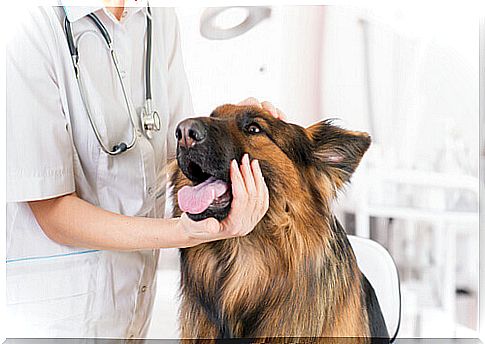
1. Analyze the situation and state of the animal
Before taking any action, it is essential to assess the situation and analyze the state in which the animal is. If you find yourself in an emergency situation, ask yourself these simple questions:
- Is the dog conscious? Does it respond to stimuli? Do you feel the pulse?
- Are you breathing properly? Is the pulse accelerated? Do you have difficulty breathing?
- Did the animal beat?
- Is he losing blood? Are the mucous membranes whitish?
- Is it able to control its excretory pathways? Is there urine or feces near the injured animal?
- Do the mucous membranes and tongue have a bluish (cyanotic) tone?
- Are there any signs of intoxication? Did the animal eat or drink any toxic substances, poison, alcoholic beverages, etc.?
After answering, you can proceed correctly based on the symptoms encountered.
2. Cardiopulmonary resuscitation – CPR
When the animal has no heartbeat or respiratory rate, CPR maneuvers are essential. The dog must lie on the ground on his right side.
The left side should face up and be free to receive resuscitation maneuvers.
Respiration
- Open the dog’s mouth to check that the throat and airways are clear.
- In case of obstruction, carefully remove stuck objects. Check immediately if the animal is recovering its cardiorespiratory rhythm.
- If there is no obstruction and / or the animal is still not breathing, follow the steps below according to the size of the animal.
Small dogs:
- Keep the jaw tightly closed.
- Cover the animal’s nose with your mouth and exhale. The dog’s chest should swell with the administered air.
- This technique can also be used for cats.
Medium and large dogs:
- Close and keep the dog’s jaw tightly closed.
- Cover his nose with your mouth and exhale.
Restoration of the heartbeat
- Place your palms firmly on the animal’s ribs, just behind the front leg joint.
- Small dogs : perform 10 compressions with 3 short exhalations.
- Large and medium dogs : 15 compressions with 5 short exhalations.
3. Drowning
To help a dog that has fainted in the pool, at sea or otherwise, the correct thing to do is to do the following:
- Small dogs : hold it by the hind legs with the head down. Gently shake the animal, in order to cause the expulsion of the water using the force of gravity.
- Large Dogs : The procedure is the same, but without holding up the animal’s hind legs. If the dog does not recover the respiratory capacity after expelling the water, proceed with the CPR maneuvers.
4. Intoxication
The first thing is to find out what the cause of the poisoning is. The packaging of most products usually have specific indications in case of ingestion by humans and pets.
It is essential to take this container to the vet, to help him understand what countermeasure to take.
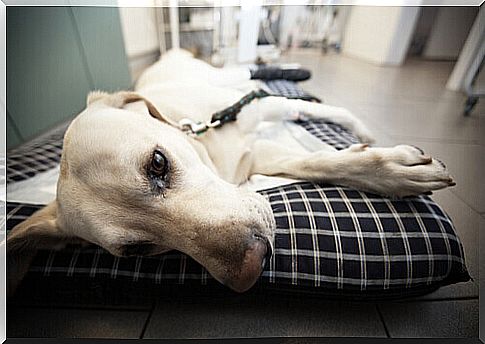
The basic advice is to induce vomiting to the animal, so that it can immediately expel the food or product accidentally ingested.
The ideal is to administer hydrogen peroxide reduced to 50% directly into the animal’s throat, with the help of a syringe without a needle.
5. Investment, fractures or dislocations
When your dog suffers a fracture or dislocation, whether due to an accident or otherwise, he must be taken to the vet immediately. It is not recommended to give him food or drink, and you will also need to make sure that he moves as little as possible.
6. Bleeding
The internal bleeding can be cured only by the veterinarian. But it is possible to temporarily contain different types of external bleeding with the following maneuvers:
- Superficial wounds : Wash the wound with saline. Then apply chlorhexidine or iodine.
- Deep wounds : Press firmly to stop blood flow. Apply an appropriately sized bandage to cover the wound. No haemostatic ligation should be done.
7. Burns
If a dog falls victim to a burn of any kind, the steps to follow are these:
- Wash the affected area with clean cold water.
- Apply a specific cream, ointment or gel for burns (or petroleum jelly).
- Cover the area with a bandage.





